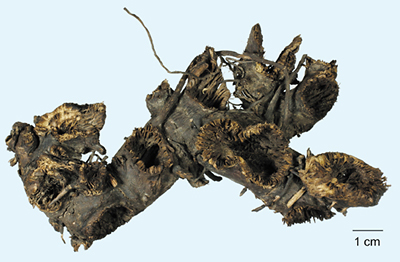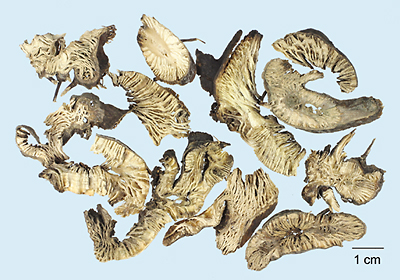Largetrifoliolious Bugbane Rhizome
Largetrifoliolious Bugbane Rhizome
Shengma
升麻
Source
The rhizome of Cimicifuga heracleifolia Kom. (Fam. Ranunculaceae).
Distribution
Mainly in Chinese provinces such as Liaoning, Jilin, Heilongjiang, Hebei, Shanxi and Shaanxi.
Harvest & Processing
Collect rhizomes in autumn; remove soil and sand; dry under the sun until rootlets are dry, then burn or remove rootlets; dry under the sun again.
Description
Long and irregular pieces, nodular, with many rootlets ; 10-20 cm long, 2-4 cm in diameter. Outer surface dull blackish-brown or reddish-brown; rough and uneven; marked with hard remnants of fine rootlets. Upper part marked with several orbicular (round) hollow scars of caudex; inner surface of hollows marked with reticulate (netted) grooves. Lower part uneven, with scars of rootlets. Light in weight; hard, do not break easily. When broken, surface uneven, with clefts; fibrous; yellowish-green or pale yellowish-white. Odour: faint; taste: slightly bitter and astringent.
Indications
1. Toothache, headache, sore throat and aphthous ulcers
2. Chronic diarrhoea and rectal prolapse, uterine prolapse
3. Measles and eruptive exanthem
Chemical Composition
Mainly contains triterpene saponins such as cimicifugoside.
Note
According to C.P., also used for medicinal purposes is the rhizome of C. dahurica (Turcz.) Maxim. and C. foetida L.
Photos


